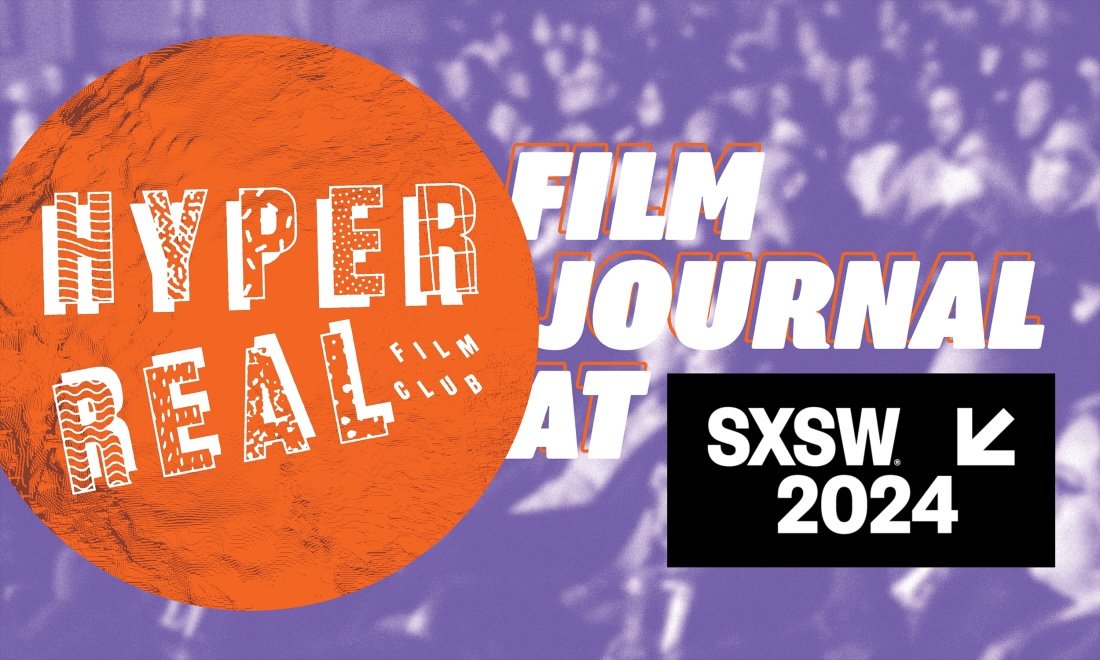Boxed in and Filled with Light: I Saw The TV Glow review
For a certain age, a certain tax bracket, a certain family dynamic, there was a hunger to the way children would watch television. Alone in the house (or maybe just hoping they were alone), they'd watch that glowing screen as the afternoon light turned to dusk, taking in kids shows and “kids” shows that winked at the viewer that they were for adults. It satisfied a need: photosynthesis for sad plants who couldn't see a way out of their stifling flower pots. It’s a feeling you either recognize or you don't.
Whether you relate to the central characters and their struggles in I Saw the TV Glow, which had its Texas Premiere at SXSW, depends a lot on what you bring to the screen from your own life. You can marvel at the powerful lead performances from Justice Smith and Brigette Lundy-Paine, appreciate the gently beautiful cinematography and unsettling monster designs, sympathize with the characters as they struggle to become their best selves in a world that resolutely denies them that opportunity, but you'll either feel I Saw the TV Glow kick you right in that soft part of your soul, or you won't. You had to be there, even if it's good you weren't.
Like writer-director Jane Schoenbrun's debut film We're All Going to the World's Fair, a plot summary doesn't quite convey the film's tone or approximate the actual events in the film. In I Saw The TV Glow, Owen (Smith) and Maddy (Lundy-Paine) are children obsessed with a Nick at Nite-esque supernatural drama called The Pink Opaque. Both kids are dealing with difficult home lives and isolating secrets regarding their gender and sexual identities. In one scene, Maddy tells Owen, "I like girls. You know that, right?" before asking if Owen likes boys or girls. Owen replies, "I like TV shows." For these lonely kids, the show becomes more real than their real lives, and maybe they're right.
Image courtesy of A24
Again, this brief description doesn't really get across the film's scope or how personal of a story it becomes. It's in the small details that Schoenbrun really shines as a visual artist. When Maddy sits on the bleachers and tells Owen that she's gay, she looked for a moment so much like a girl in my high school who went through similar struggles, I felt nauseous. When Owen asks his dad if he can stay up late to watch The Pink Opaque, his dad (played with deep intensity by Limp Bizkit frontman Fred Durst) responds, with just a shade of a threat, "Isn't that a show for girls?" In just a few words and in just a few seconds, Owen's relationship with his father is clarified to the viewer like a nod of recognition at a funeral. It hits at an emotional level; nothing more needs to be said.
That subtlety was already firmly established in World's Fair, but Schoenbrun has leveled up as a visual storyteller since their debut—in part because the A24 money lets them pursue more ambitious visual effects and shot compositions. While World's Fair smoothly mimicked analog YouTube and social media videos, I Saw the TV Glow manages to make a fake tv show like The Pink Opaque feel like a show you might have actually seen in the '90s. When the movie is scary, it is legitimately unsettling. Mr. Melancholy, the big bad of The Pink Opaque, looks like an oozing nightmare of craters and holes. So much of Owen and Maddy's childhood is spent in dark corners and underlit rooms, on long walks as dusk turns into night, but there's a depth to that world that pulls viewers in. And as the "real world" becomes more and more surreal throughout the film, Eric Yue's cinematography blends just enough of the TV and real-life styles to where you might not even notice it's happening.
The heart of the film is Smith and Lundy-Paine's performances. Smith has established himself as a rising talent since his work in The Get Down and starred in recent studio fare like Detective Pikachu and Dungeons & Dragons: Honor Among Thieves. In I Saw the TV Glow, Smith finds a challenge with a character trapped inside himself. Smith can't rely on the leading man charisma he's tapped into in the last few years, and ends up offering a painfully restrained performance that you can't look away from. He sounds like a teenager whose voice never stopped cracking during puberty and looks like a child who never grew into his oversized adult clothing.
Image courtesy of A24
Lundy-Paine, meanwhile, delivers one of the best and most emotionally affecting performances in years. They play Maddy like someone holding back tears by clenching their fist so hard their knuckles are white. Like Owen, Maddy is stifled by the world, unable to really let herself feel the weight of that pressure without breaking wide open. When Lundy-Paine delivers a monologue near the end of the film, it felt like everyone in the entire Paramount Theatre was holding their breath. If Lundy-Paine’s performances in Bill and Ted Face the Music and Atypical weren't enough to convince you, I Saw The TV Glow firmly establishes them as an actor to watch.
And while Schoenbrun obviously had great talent to work with, it's a huge credit to their skill as a director that they seamlessly integrated everything into one cohesive work. In only two films, they've established themself as a once-in-a-generation talent, tapping into personal experiences that feel grounded and dream-like all at once. It's only March, but I Saw the TV Glow is already one of the best films of 2024, a deeply sympathetic film about what we lose when we give up on being our true selves.




Ziah is the founder and former editor-in-chief of the Hyperreal Film Journal. He can usually be found at Austin Film Society or biking around town.